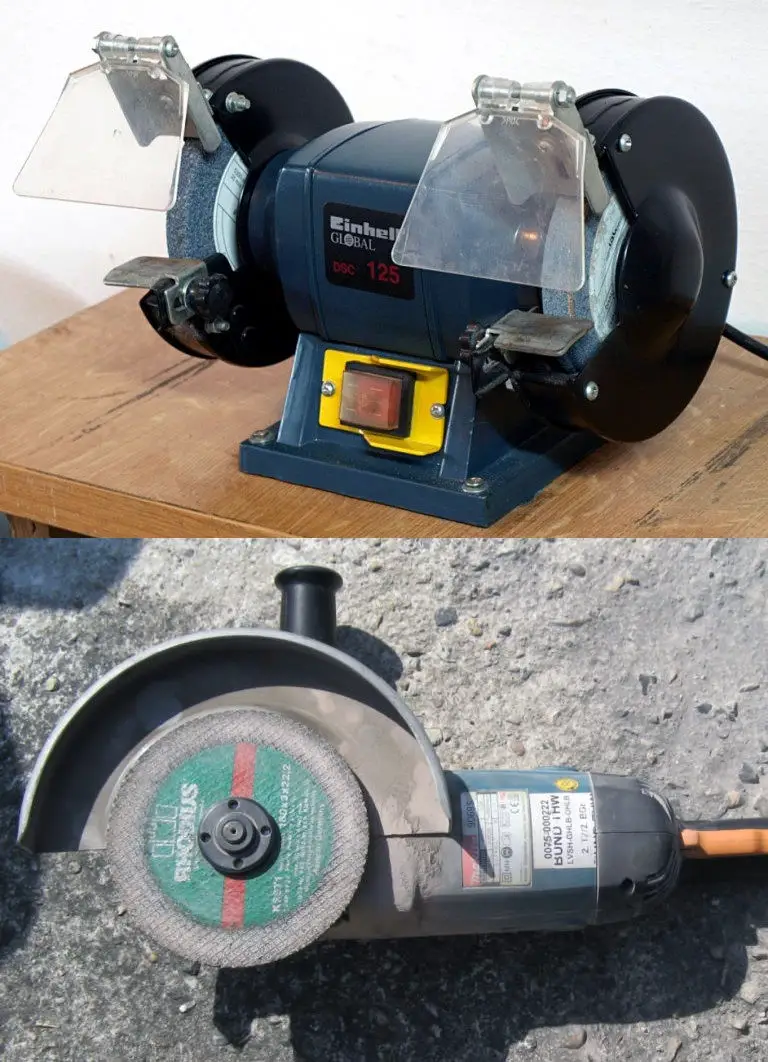Both bench grinders and angle grinders could be handy for a certain project that you’re working on. But how can you determine which alternative is the best fit for your task?
Our article aims to solve this confusion by comparing bench grinder vs angle grinder in detail to help you make a well-informed decision.
Contents
Differences Between Bench Grinder vs Angle Grinder
Despite coming from the grinder family, the two types of power tools are significantly distinctive.
1. Design
Their designs are considerably different.
Angle grinders have a handheld design to fit comfortably in your hands and for easy control. They include a grip to maneuver easily into tight corners and to reduce vibrations. This grip adds additional support to your handling and acts as a vibration dampener.
On the contrary, bench grinders are power tools sitting on top of your workbench and using an abrasive disc for cutting workpieces. It’s designed to stabilize on a level surface as well as to minimize vibration. When using a bench grinder, you have to bring your workpiece to it.
2. Function
Even though both power tools are grinders and can be utilized for grinding, they are not identical.
Bench grinders are ideal for sharpening dull tools, modifying the size of workpieces, and restoring old rusted items. When you need to sharpen an object and the task requires both hands to obtain the correct edge, a bench grinder is suitable for your job. For example, it is the ideal sharpening tool for lawn mower blades.
You can also utilize bench grinders to shape, hone materials, as well as remove burrs in casting. By switching between different disc types, you can use them for sharpening, polishing, shaping, and cleaning any form of metal.
On the other hand, angle grinders are extremely versatile and have a wide range of applications. They can cut various materials and are frequently utilized for metal because they are strong enough to cut through this material.
Other applications of angle grinders include polishing wooden objects, removing mortar from bricks, and sharpening the edges of certain instruments. They can also clear dust from old metal objects.
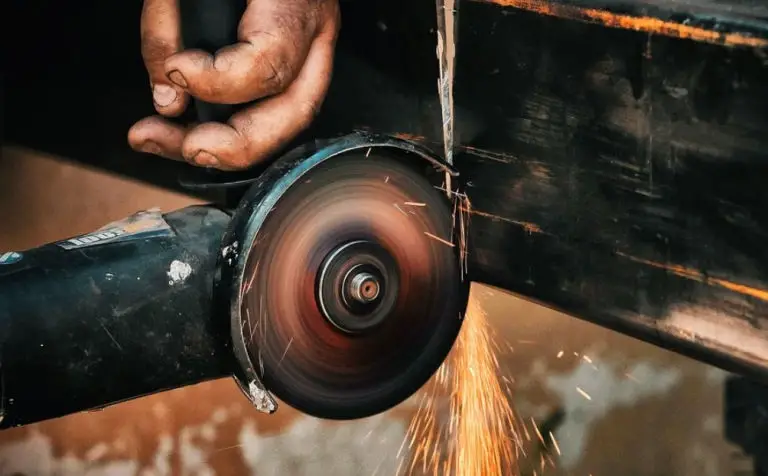
3. Flexibility
Because angle grinders are portable power tools that can tackle a wide range of tasks, they have far more uses than bench grinders. Since the latter is immobile, you must work around them.
As a result, bench grinders are less flexible and are unable to perform some tasks. On the other hand, angle grinders can operate from a number of angles, thus they can manage a greater range of applications.
4. Speed
Regarding speed, angle grinders are considerably faster than their bench alternatives. The former typically has a disc speed ranging between 8,000 and 12,000 RPM, while the latter’s wheel speed is from 3,000 to 3,500 RPM.
The former is lightweight and portable, making them an excellent choice for quick jobs. Small cutting tasks can be completed in minutes, allowing you to get more done in less time. By contrast, bench grinders don’t cut as quickly but they are far more precise.
5. Vibrations
When operating any tool, you’ll almost certainly experience some vibration as a result of its power and speed. Nevertheless, angle grinders vibrate significantly more in comparison to bench grinders.
Since bench grinders are designed to be used on a level surface, the weights of both these grinders and the level surface work together to minimize vibration. By contrast, angle grinders are portable power tools, which makes them less stable.
The exact degree of vibrations will certainly vary depending on the model and the materials you’re operating on.
6. Wheels
There are generally 2 rotary discs in bench grinders. Both of them can be attached and utilized at the same time. This is different from angle grinders because they can only utilize one disc at a time.
Even though the difference is little, the fact that bench grinders having two discs saves time by eliminating the need to change discs, compared to using angle grinders.
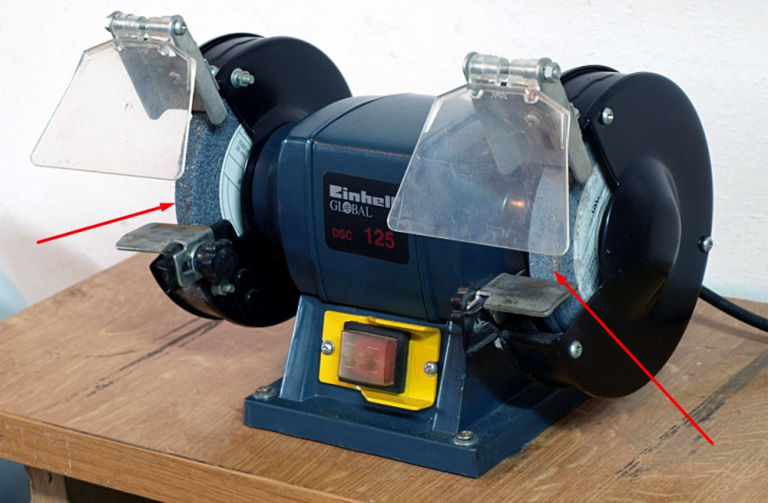
7. Weight
The bench grinders are certainly heavier than angle grinders. Since the latter are handheld power tools, they must be lightweight, varying between around 7 and 8 pounds.
On the other hand, bench grinders are heavy due to their cast iron base, which helps them stabilize in position.
8. Portability
The last distinction between the two power tools is their portability.
Angle grinders are lightweight handheld tools with an approximate weight of 8 pounds. Their compact size allows you to easily grip and maneuver them while completing small projects.
On the contrary, bench grinders are stationary machines that position on the surface of a workbench and let you manipulate the materials that you are operating on rather than the power tool itself.
Because of this distinction, angle grinders are frequently carried to a job site, whereas bench grinders are used in workshops.
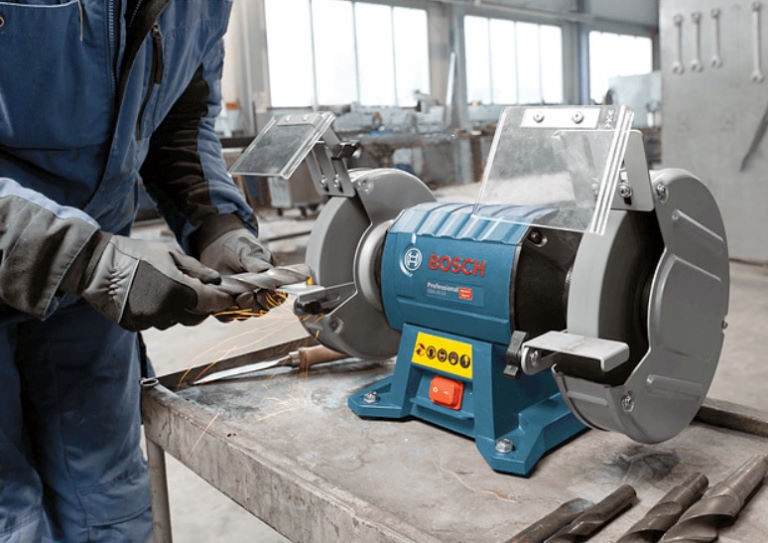
Pros & Cons Of Bench Grinders And Angle Grinders
To make better choices, you should check out the advantages as well as disadvantages of bench grinders and angle grinders.
| Angle Grinder | Bench Grinder | |
| Pros |
|
|
| Cons |
|
|
Can You Use An Angle Grinder As A Bench Grinder?
You can use an angle as a replacement for a bench grinder. The conversion doesn’t require much effort.
Bench grinders can be pricey, so making use of an angle grinder to place their bench-top counterpart can help you save both money and time. The conversion has no negative impact on the converted angle grinder.
How to transform an angle grinder into a bench grinder?
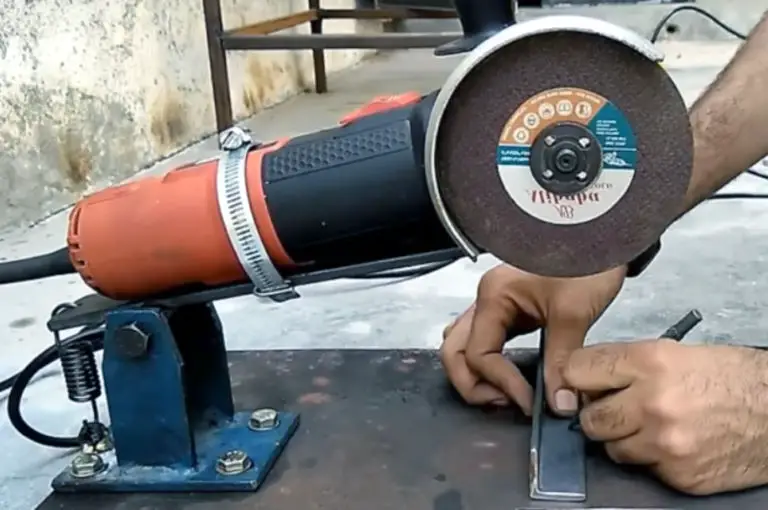
Converting your angle grinder into its bench-top variant isn’t complex. To construct a unique grinder stand, you don’t need to spend lots of money on new materials because all you need is a vise.
Simply attach the angle grinder to a length of square tubing. Next, to create a tool rest, connect a small square tubing bit to the previous square tubing. In order for the stand to work, you’ll just need to weld a little.
Safety Tips When Using Power Tools
Always remember that you should use any electric power tool with extreme caution to avoid because they are quite powerful tools.
- You should only use them after taking all necessary precaution measures. Before beginning to grind, sharpen or cut materials, put on safety gear, such as safety gloves & goggles, and wear them throughout the whole working process.
- When working with hand and power tools, you should dress appropriately. Loose clothes, jewelry, and neckties are inappropriate attire for the job. Before you begin working, make sure there are no dangling objects around your worksite.
- When carrying out your projects, it is critical to maintain complete control over your power tools throughout the whole project. You must plant your feet firmly on the ground and keep a good balance in addition to wearing non-slop footwear.
- Moreover, it is also essential to keep a strong grip, especially with portable equipment. Losing control will almost always result in a dangerous situation. Don’t use a power tool if you believe that it is too heavy.
- Power tools like bench grinders and angle grinders should be treated with caution and respect. If some things are not going your way, don’t become careless. Take a pause, relax, then get back to work later.
- Stay away from using these powerful tools if you are drunk or high, distracted or sick, etc. When you plan ahead, being safe is simple.
Frequently Asked Questions
1. Why do bench grinders have two wheels?
Bench grinders include 2 wheels that you can utilize for a variety of tasks. The first disc is typically utilized for precise honing and tasks that require precision. On the other hand, the second wheel is utilized for rough shaping.
Depending on the owner’s demands, these discs can be readily switched for other types of wheel configurations.
2. What can you not grind on a bench grinder?
You cannot use your bench grinder to grind materials that its disc isn’t designed for. The restricted materials include plastic, wood, and other materials that are non-metallic.
Final Words
By being aware of the comparison between bench grinders vs angle grinders as well as their pros & cons, you can choose the most suitable tool for your project. While the latter is the finest option for all grinding and polishing projects, the former is the best tool to cut, sharpen, and shape materials.
